
|

|

|

|

|

|

|

|

|

|

|

|

"The Ancient Middle Eastern influences potentially imbued in what little imagery and information we have and its apparent genesis in the Alien lore as a whole.
As you can see the giant head has carvings on its cheek. These carvings look to be of Sumerian cuneiform, which incidentally is one of the first human forms of written communication.
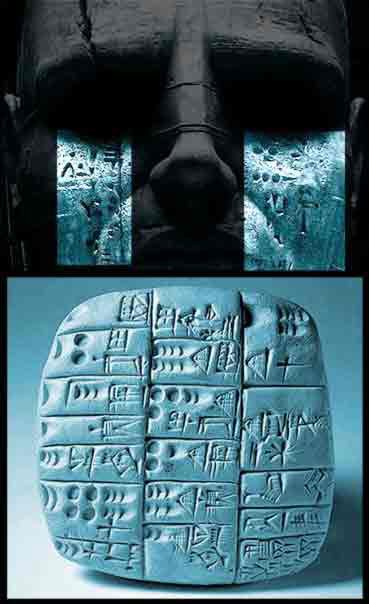
A comparison of Sumerian Cuneiform and the Monolithic Head...
Other possible Sumerian influences could be from the myth of the giant Sumerian gods Ц the Anunnaki. According to said myth, these giants came to Earth and created humans as servants for themselves. But the Anunnaki later freed humans when they became too much to handle.
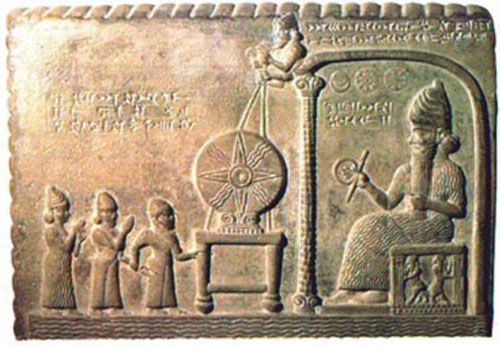
Stone relief of the Giant Sumerian Anunnaki and their Human Creations...
One could very easily suppose that Space Jockeys in Prometheus are a reference to the Anunnaki, and that there are other yet-to-be-seen players that may be based on Sumerian gods such as An, Enlil, Enki and Ninhursanga.
In a drawing taken from human creation myth of the Sumerians, we see what looks like the ampules shown in official Prometheus images and videos released last month.
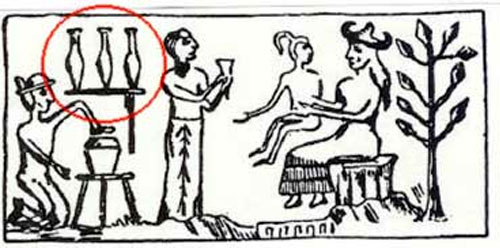
Sumerian Creation Myth (Circled in red containers reminiscent to the ampules in the release promotional imagery)...
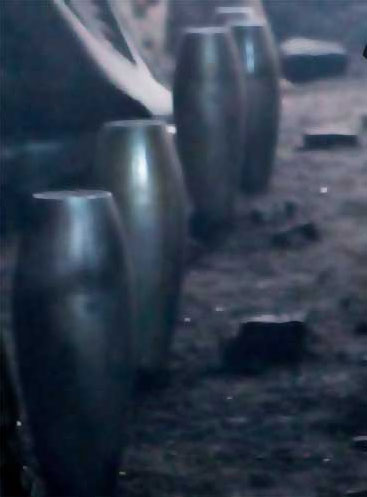
"Ampules" from the Prometheus promotional imagery
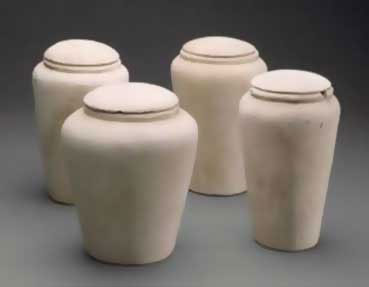
Egyptian canopic jars
Whilst there is somewhat of a backlash to Ridley Scott subscribing to the Ancient Aliens theory, it has been a subtle part of the Alien franchise from the very beginning as evident in the production of Alien. There are hints of this in Dan O'Bannon's original script treatment which included pyramids. One can also look for hints in Ron Cobb and Chris Foss's Alien concept art of the planetoid pyramids.
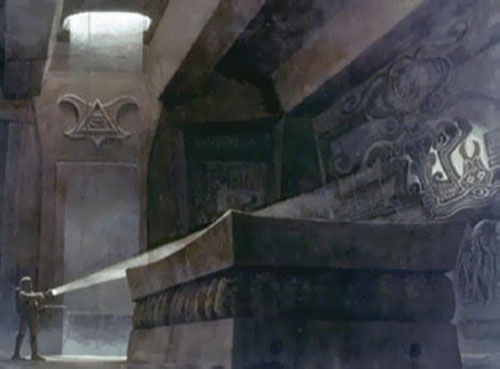
Ron Cobb's Alien ruins interior, certainly evokes what we are seeing in the released Prometheus promo images
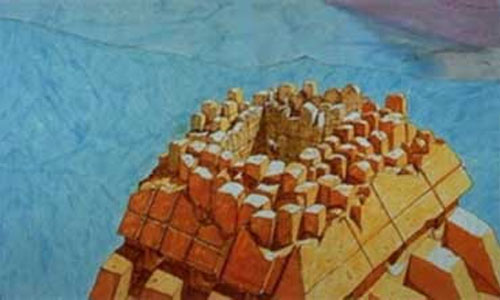
Chris Foss's concept art on the Alien pyramid exterior
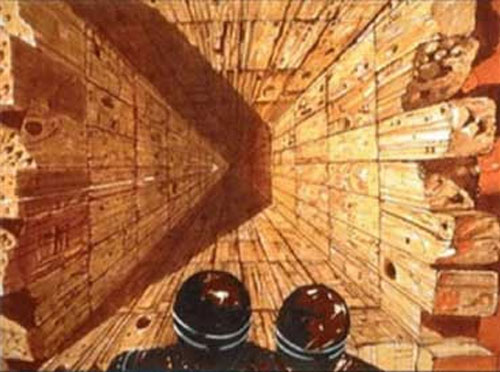
Foss's interior of the Alien Pyramid
And to a greater extent HR Giger being influenced by the Egyptian book of the dead specifically in his design of the Space Jockey which mirrors bark/barge of the funerary god Seker/Sokar and of Giger's hieroglyphic like mural of Alien reproduction.
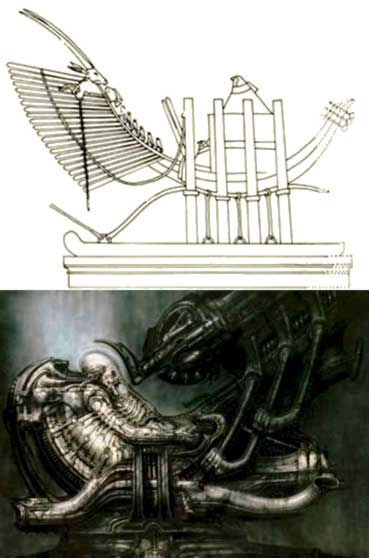
A comparison of (bottom) Giger's Space Jockey concept art and (top) a reproduction of the barge of the funerary god Seker/Sokar
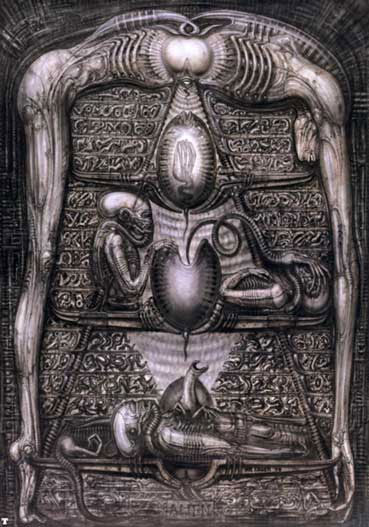
Giger's hieroglyphic alien reproduction concept art work
The Sumerian Egyptian references are also relevant in the Weylan Yutani logo. One could assume that it refers to the Sumerian sun god Samash, a precursor to the Egyptian sun god Horus/RA.
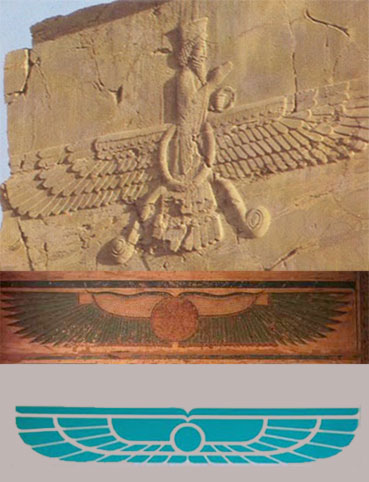
(top) Ancient stone relief of the Sumarian Sun God Samash (center) The Egyptian sun god Horus's winged disc (bottom) Alien's Weylan Yutani logo
Could it be that due to the events of Prometheus, Weyland Corporation's interactions with the Space Jockey will prompt a corporate re-branding? One other possibility is that after Prometheus "Weyland" not only incorporate "Yutani" but also the power and strength associated with Sun Gods.
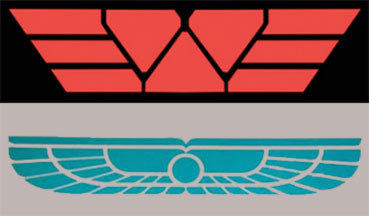
(Top) Prometheus Weylan logo, (Bottom) Alien's Weylan Yutani logo
In all, there is little to worry of the inherent chintzyness that is associated with the Ancient Aliens theory creeping into Prometheus, as the elements pointed out in this article are very subtle. The Ancient Alien design elements and iconography are complimentary which were initially intended to be a part of the Alien universe.
Original Source is here
